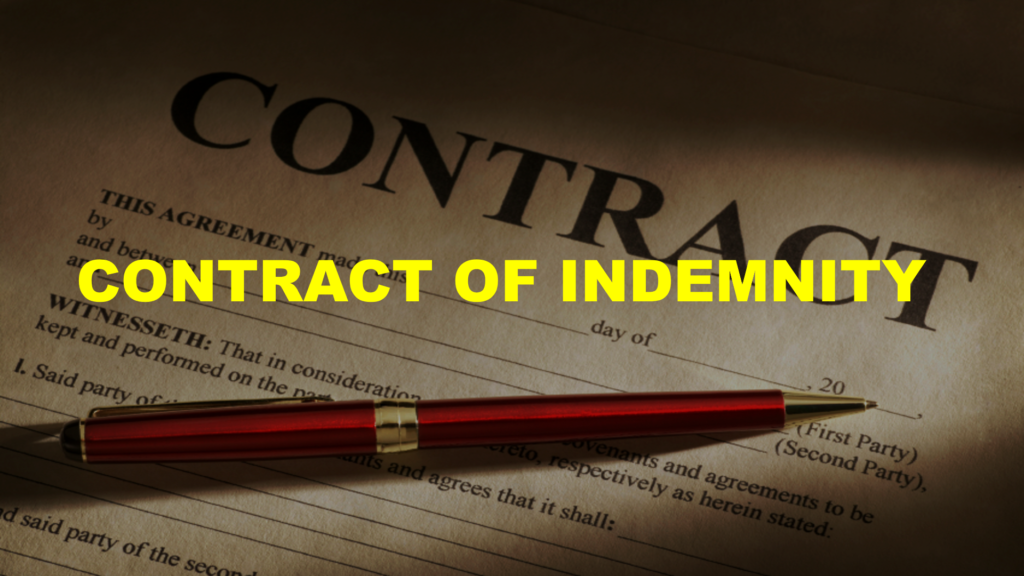
Definition of “Indemnity” in Section 124 of the Indian Contract.
An Act is a little confined and this is how it goes: s. 124. Definition of “Contract of Indemnity.” A “Contract of Indemnity” is a contract in which one party promises to protect the other from loss brought on by the conduct of the promisor or any other party.
Illustration
A agrees to hold B harmless from the effects of any legal action that C may bring against B in relation to a specific amount of 200 rupees. This is an indemnity agreement.
The above example attached to the section states that if someone takes action to protect another from the repercussions of a potential legal action against them, then that action constitutes a contract for indemnity. The indemnifier and the person they are protecting are referred to as the “indemnity holder” or “indemnified.”
Insurance indemnity
Except for life and personal accident insurance, almost all insurance policies are indemnity contracts. The promise to indemnify made by the insurer is unbreakable. If a performance is not up to par, a lawsuit may be filed right away regardless of actual damages. One would have the right to request that the indemnifier save them from the liability by paying it off if the indemnity holder had liability and that liability was absolute.
Extent of liability
Section 125 lays down the extent of liability.
S. 125. Rights of indemnity-holder when sued.
Acting within the scope of his authority, the promisee in an indemnity agreement is entitled to compensation from the promisor.
(1) Any and all damages that they might be required to pay in a lawsuit regarding any matter covered by the promise to indemnify;
(2) All costs that they might be required to pay in any such suit if, in bringing or defending it, they did not disobey the promisor’s instructions and acted prudently under the circumstances absent any indemnity contract, or if the promisor gave them permission to bring or defend the suit;
(3) Any payments they may have made in accordance with any compromise of a similar lawsuit, provided that the compromise complied with the promisor’s instructions and was one that the promisee would have made if there had been no contract of indemnity or if the promisor had given them permission to do so.
Commencement of liability
When does the indemnifier become liable to pay, or when is the indemnity-holder entitled to recover his indemnity, is a crucial question in this context. The original English rule stated that an indemnity could only be paid if the party receiving it had actually lost money by paying the claim. The rule of law used to be that you had to be compensated before you could request compensation, but the rules have changed. In Gajanan Moreshwar Parelkar v. Moreshwar Madan Mantri, CHAGLA J [then the Chief Justice of the Bombay High Court] provided a well-explained explanation of the process of transformation: “It is true that under English common law, no action could be maintained until the actual loss had occurred, but it was quickly realized that an indemnity could be provided even before the actual loss had occurred.
Specified time for notice
Illustration
A motor vehicle with insurance was stolen and lost. According to the insurance contract, the insured was required to notify the insurer as soon as a theft or other criminal act occurred. The assured immediately reported the theft to the police but informed the insurer a month later. It was unclear if this qualified as a notice that was given right away. According to the court, the phrase “immediately” implies that notice should be given right away, avoiding needless delay. The legitimacy of the assured in the case was immediately evident in the police report. It would not be reasonable to consider a report to the insurer after one month. There was no way that indemnification denied.




0 Comments